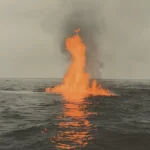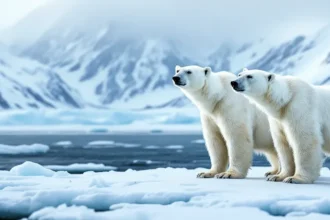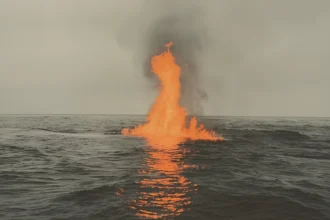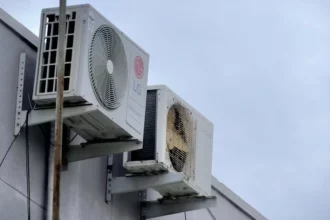What happens when the world’s frozen highways suddenly become open for business? The Arctic Ocean is experiencing exactly this dramatic change, and it’s creating both opportunities and serious problems that affect our entire planet.
According to research from FirstPost, France24, and Northumbria University, the Arctic region has been warming four times faster than anywhere else on Earth since 1979. This rapid warming is melting the ice that once blocked ships from traveling through these northern waters.
Sammie Buzzard, a polar scientist at Northumbria University’s Centre for Polar Observation and Modelling, explains how this process works in ways that accelerate even more warming.
How Arctic Ice Melting Creates New Ocean Highways
Think of Arctic ice like giant mirrors floating on the ocean. These white surfaces reflect sunlight back to space, helping keep our planet cool.
But as global warming melts this ice, dark ocean water appears underneath. This dark water absorbs heat instead of reflecting it, causing even faster melting.
- Northern Sea Route: This path runs along Russia’s coast, offering ships a much shorter journey between Europe and Asia than traditional routes through the Suez Canal.
- Northwest Passage: Located through Canada’s Arctic islands, this route could dramatically reduce shipping times between Atlantic and Pacific regions for North American trade.
- Transpolar Sea Route: The most ambitious path goes directly across the North Pole, potentially becoming accessible for unescorted navigation by 2030.
The Hidden Pollution Problem Making Things Worse
Here’s where the situation becomes deeply concerning. Ships traveling these new routes burn heavy fuel oil, the cheapest and dirtiest type of ship fuel available. This fuel produces something called black carbon – tiny dark particles that create a dangerous cycle of warming.
| Before Shipping Increase | After Shipping Boom (2013-2023) |
| Clean white ice reflected sunlight effectively, keeping the region naturally cool | Black carbon particles now cover ice surfaces, making them absorb more heat and melt faster |
| Limited underwater noise allowed Arctic wildlife to communicate and hunt normally | Doubled underwater noise in some areas disrupts marine animal behavior and feeding patterns |
| Stable sea ice provided reliable habitat for Arctic species | Rapidly shrinking ice threatens 96% of polar bear habitat needed for hunting and movement |
As Sammie Buzzard explains, “The black colour deposited on the white ice means the ice then absorbs more sunlight, leading to more melting.” This creates a vicious cycle where more shipping leads to more pollution, which causes faster ice melting and even more shipping opportunities.
Environmental Consequences That Affect Everyone
The environmental impact extends far beyond the Arctic itself. Between 2013 and 2023, shipping activity in these waters increased dramatically, with vessels traveling 111% more distance than a decade earlier.
- Polar bear survival crisis: These animals depend on sea ice platforms for hunting seals, their primary food source. Without stable ice, entire populations face starvation.
- Marine ecosystem disruption: The doubled underwater noise levels interfere with whale communication, fish migration patterns, and overall ocean food chains.
- Global climate acceleration: As Buzzard notes, “The polar regions act to help cool the rest of the planet” by reflecting energy back to space. Losing this natural cooling system affects weather worldwide.
What’s Being Done and What Comes Next
The United Nations’ International Maritime Organization began implementing a phased ban on heavy fuel oil in Arctic waters starting July 2024, with full compliance required by 2029.
However, experts estimate that 5% of global shipping will eventually shift to Arctic routes, making continued environmental protection crucial for preventing further damage.
This situation shows how climate change creates unexpected consequences that can accelerate the very problems causing them in the first place. Understanding these connections helps us make better decisions about our planet’s future.











